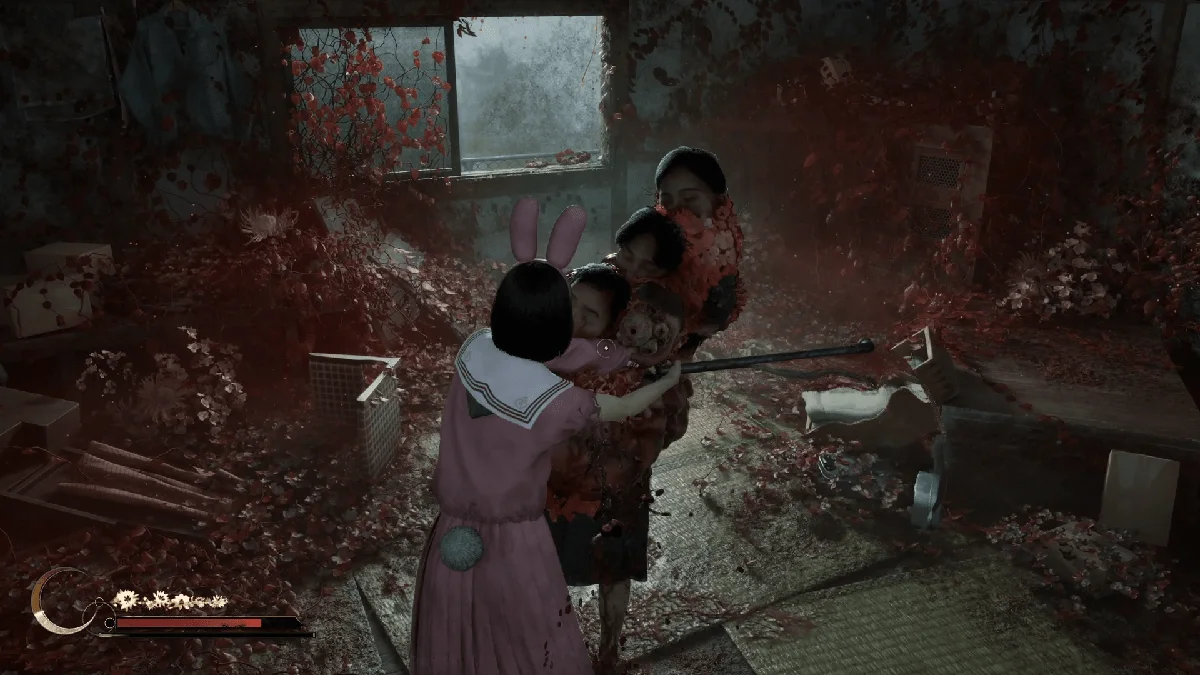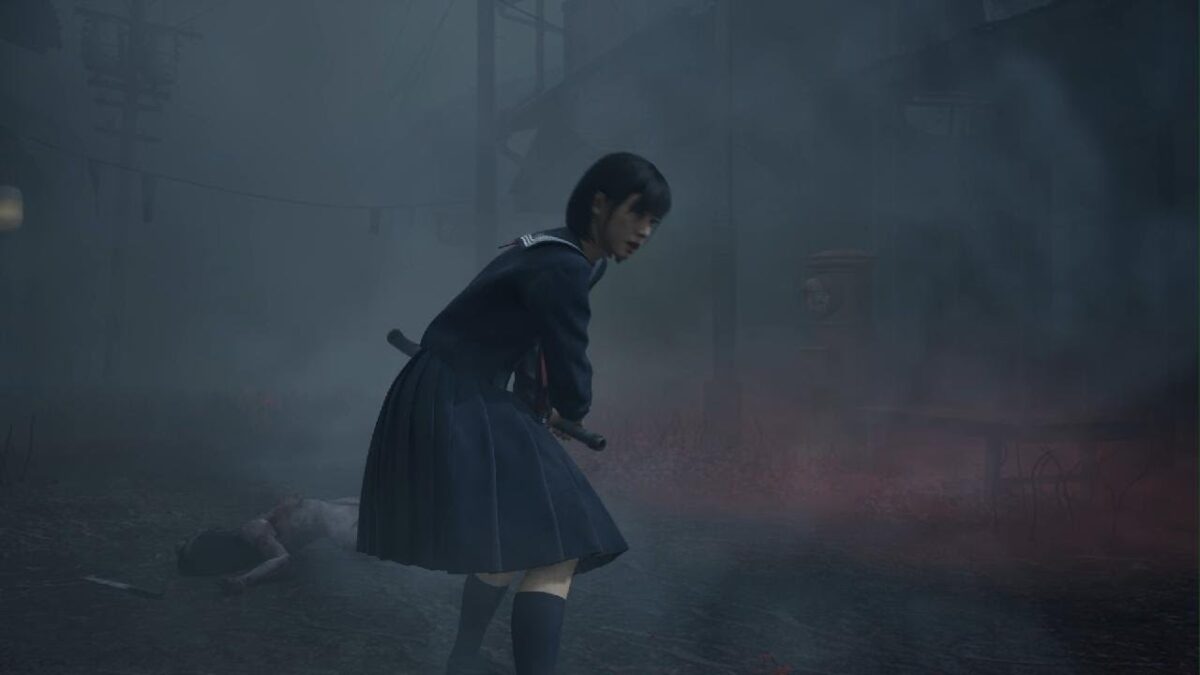Silent Hill f reinvents the iconic horror series by exploring a terrifying new brand of fear rooted in cultural anxiety and societal repression.
For more than two decades, the name Silent Hill has conjured a very specific image: a fog-shrouded, rust-belt American town, haunted by personal demons made manifest.
It was a landscape of peeling paint, industrial decay, and monsters born from a distinctly Western psychological horror tradition. With the release of Silent Hill f on September 25, Konami has made a radical, series-defining declaration; Silent Hill is not a place. It is a concept, a “vibe,” a state of being that can fester anywhere in the world.
This standalone story, the first mainline entry in over a decade, abandons America entirely, setting its stage in the fictional Japanese town of Ebisugaoka during the tumultuous 1960s. The move is more than a simple change of scenery. It is a fundamental reinvention of the franchise’s identity, a deliberate pivot away from an identity the developers felt had become “overly westernized”.
By immersing itself in a new culture and a new era, Silent Hill f unearths a more specific, resonant, and arguably more terrifying form of psychological horror—one rooted not in the familiar territory of individual guilt, but in the crushing weight of societal trauma.
Silent Hill f Concept
The creative team behind Silent Hill f approached the project with a clear goal: to create a “100% Japanese horror” experience, an evolution as vital and refreshing as Resident Evil 7 was for its own franchise.
To achieve this, they had to redefine what a Silent Hill game could be. Acclaimed writer Ryukishi07, known for the visual novel series Higurashi: When They Cry, offers a compelling metaphor for this new philosophy. He views the series’ core elements—the fog, the dread, the monsters—as a “pie crust”. The player must bite through this terrifying exterior to savor the “true colors” concealed beneath; the deep, psychological themes that give the horror its meaning.

For Silent Hill f, the filling for that pie is drawn directly from the cultural anxieties of post-war Japan. This conceptual shift liberates the series from its own iconography.
There are no Pyramid Heads or bubble-headed nurses here; instead, the developers have crafted a new nightmare from culturally specific boogeymen. Game director Al Yang and series producer Motoi Okamoto have stated that this change enables them to “depart from the pre-established canon and discover more of the lore.” It suggests a more versatile future where the “flavour” of Silent Hill can change with each new entry, exploring different cultures and different traumas under the unifying banner of psychological dread.
Why is Silent Hill f in Japan
The true antagonist of Silent Hill f is not a single monster, but the oppressive atmosphere of its setting. The game takes place in the fictional town of Ebisugaoka, inspired by the real-life city of Kanayama, during a period of intense cultural friction in Japan.
The 1960s were a time when ancient traditions clashed with encroaching modernity, superstition warred with science, and deeply ingrained patriarchal values were being challenged by a burgeoning women’s rights movement. Ryukishi07 describes the era as sitting “right at the border of what feels like the present and what feels like the past,” a time where “fantasy and mythology… can coexist” with the modern world.

This cultural battlefield provides fertile ground for a uniquely Japanese horror story. The game explores a society where, by tradition, a man’s word is “law” and many women were seen as little more than “bargaining chips to be married off”.
This societal pressure becomes the primary source of the game’s horror, a suffocating force that seeks to control and define its victims.
This focus on societal horror is embodied by the game’s protagonist, Hinako Shimizu, a high school student described by producer Motoi Okamoto as a “repressed young woman”. Fleeing an abusive father and struggling to live up to the standards set by her sister, Hinako is an outcast trying to find her place in a world that has already decided it for her.
Her story is a stark departure from the classic Silent Hill formula. The horror of past entries, most famously Silent Hill 2, was born from the protagonist’s internal, personal guilt. James Sunderland was drawn to the town to confront his own sins.
Hinako’s horror, in contrast, is generated by external forces. Her trauma is not the result of something she has done, but of what her family, her culture, and her era are doing to her. The psychological terror is not about atoning for one’s own repressed actions, but about surviving an oppressive system that seeks to erase one’s identity. Ryukishi07 sought to create a protagonist who “actively makes her own choices rather than being pulled along by the story,” and Hinako’s central conflict is mustering the courage to combat this repression.
Silent Hill f Monsters and Horror
This theme of societal repression is made terrifyingly real through the game’s visual language and monster design.
The creative team’s guiding principle was to find the “terror in beauty”—the unsettling feeling that arises when something becomes too perfect or idyllic. The game’s most prominent visual motif is a beautiful yet grotesque red flora that spreads like a disease, simultaneously evoking the delicate beauty of cherry blossoms and the grotesque horror of blood and viscera.
The monsters themselves, designed by artist Kera, are direct allegories for the anxieties of a young woman in this period. One creature, a living mass of flesh covered in distended, breast-shaped sacs that birth smaller monsters, is a horrifying manifestation of tokophobia—the fear of pregnancy and childbirth—reflecting the societal pressure on women to fulfill a maternal role.
Another enemy, the “Kashimashi,” is a marionette stitched together from the body parts of different women; its name means “a clamorous gathering of women,” serving as a chilling symbol of the objectification and fragmentation of female identity.

Even Hinako’s school uniform tears and frays as the story progresses, symbolizing a chrysalis-like process of skin shedding that mirrors the series’ own rebirth.
Silent Hill f Combat Gameplay
The game’s design reinforces this intimate horror through its combat. With firearms being anachronistic for a schoolgirl in 1960s rural Japan, combat is exclusively melee-based. Hinako must defend herself with whatever she can find, from steel pipes and baseball bats to fire axes. This forces players into visceral, close-quarters brutality. There is no detachment, and no distance; only the raw, terrifying struggle for survival against the physical manifestations of a repressive culture.
The Silent Hill f combat has so far divided critics over its design choices, but the exclusively melee-focused gameplay makes for a more visceral experience.
This commitment to authenticity extends to the game’s soundscape. Legendary series composer Akira Yamaoka intentionally created a “pure Japanese experience” with the music, embracing the “pacing and the flavor of Japanese music” rather than adjusting it for Western audiences as he had in the past. The result is a holistically Japanese horror experience, from its themes and visuals down to its sound and gameplay mechanics.
The Future of Silent Hill Games
Early Silent Hill f reviews reveal a a bold and necessary evolution for a franchise that was at risk of creative stagnation. By proving that the series’ core tenets of psychological horror can thrive outside its titular American town, Konami has unlocked its global potential.
The game is evidence of the idea that true horror is often culturally specific, born from the unique pressures, traditions, and traumas of a particular time and place.
“Silent Hill” is no longer a location but a lens. It is a powerful framework for exploring the darkness that lurks within any society. The future of horror may not be found in revisiting the same foggy streets, but in discovering new Silent Hills waiting in the shadows of cultures all over the world.






